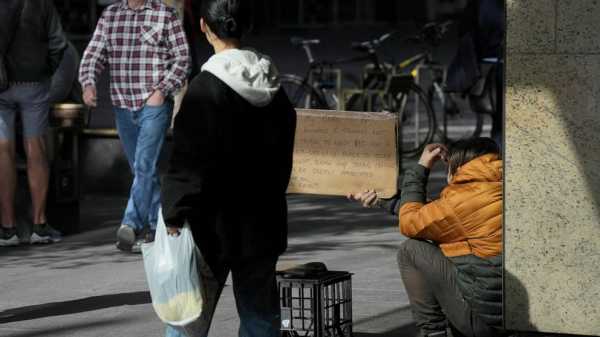
CANBERRA, Australia — The Australian government on Tuesday forecast the nation’s first balanced annual budget in 15 years but warned that economic pressures such as inflation would push the country into deeper debt in future years.
Treasurer Jim Chalmers announced a surplus was forecast for the fiscal year ending June 30 ahead of releasing the government’s economic blueprint for next year that aims to ease financial hardships of the most needy without stoking stubbornly high inflation.
High prices for commodities including iron ore, coal and gas plus income tax revenue buoyed by an extraordinarily low jobless rate of 3.5% are expected to deliver the first surplus since the global financial crisis tipped the Australian economy into the red in 2008.
“We are now forecasting a surplus this year, smaller deficits after that, and less debt throughout the budget,” Chalmers told reporters. Australian annual budgets typically contain forecasts for the next four years.
Chalmers did not say how big the surplus would be, but several media outlets report a 4 billion Australian dollar ($2.7 billion) surplus is expected.
In an interim budget forecast released by the government in October last year, a AU$36.9 billion ($25 billion) deficit was expected this year. That was less than half the AU$78 billion ($53 billion) forecast by the previous government in March last year.
In October, Australia’s gross debt as a share of GDP was forecast to reach 37.3%, or AU$927 billion ($628 billion), by the end of the current fiscal year and to continue to rise through the decade.
The government has already announced that next year’s budget, to be detailed later Tuesday, will contain AU$14.6 billion ($9.9 billion) in measures to help low and middle-income earners cope with inflation that slowed to 7% in the year through March from a 7.8% peak in December.
Australia’s central bank says inflation remains too high and last week increased its benchmark interest rate by a quarter percentage point to 3.85%. It was the 11th hike since May last year when the cash rate was a record low 0.1%.
Chalmers said government spending measures in his latest budget were designed to avoid fueling inflation.
“This is a responsible budget which helps people doing it tough and sets Australia up for the future,” Chalmers said.
“It’s carefully calibrated to address cost of living pressures in our communities, rather than add to them,” he added.
The budget will contain the initial costs of the so-called AUKUS agreement with the United States and Britain that will deliver Australia a fleet of eight submarines powered by U.S. nuclear technology.
The fleet, announced in March, is forecast to cost Australia between AU$268 billion ($182 billion) and AU$368 billion ($249 billion) by the mid-2050s.
Chalmers said delivering surplus budgets would become more difficult from next year as economic pressures were expected to intensify.
___
Find more of AP’s Asia-Pacific coverage at https://apnews.com/hub/asia-pacific
Sourse: abcnews.go.com






